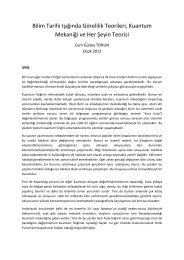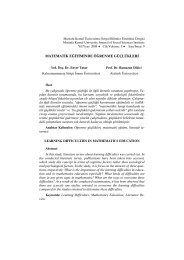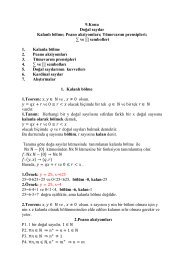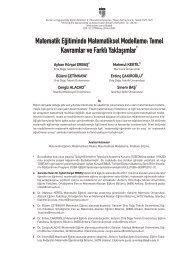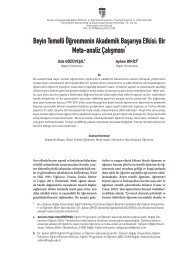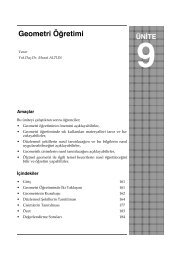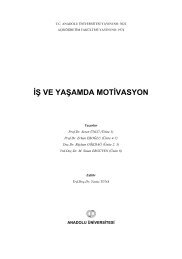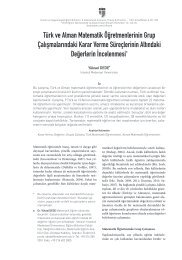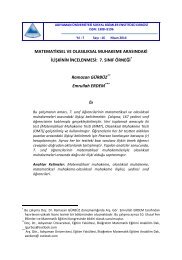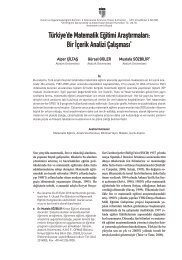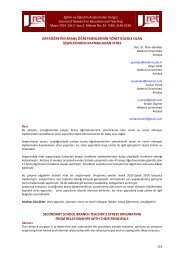NEWSLETTER
2015-12-98
2015-12-98
Create successful ePaper yourself
Turn your PDF publications into a flip-book with our unique Google optimized e-Paper software.
..<br />
..<br />
Feature<br />
.<br />
γ<br />
.. . .. . . ..<br />
γ<br />
.. . .. . . ..<br />
... . .. ..... .. . ... .<br />
α<br />
63. A circle of radius r rolls (without slipping) inside a circle<br />
of radius 1. Draw the whole trajectory of a point on the rolling<br />
circle (this trajectory is called a hypocycloid) for r = 1/3,<br />
r = 1/4 for r = 1/n, for r = p/q, and for r = 1/2.<br />
... . .. ..... .. . ....<br />
.<br />
α<br />
β<br />
.<br />
.<br />
. .. . .<br />
.<br />
..<br />
1<br />
β<br />
... . .. .<br />
.<br />
. . ..<br />
.<br />
. . •.<br />
r<br />
.<br />
To Problem 62 To Problem 63<br />
64. In a class of n students, estimate the probability that two<br />
students have the same birthday. Is this a high probability? Or<br />
a low one?<br />
Answer: (Very) high if the number of the pupils is (well)<br />
above some number n 0 , (very) low if it is (well) below n 0 ,<br />
and what this n 0 actually is (when the probability p ≈ 1/2) is<br />
what the problem is asking.<br />
65. Snell’s law states that the angle α made by a ray of light<br />
with the normal to layers of a stratified medium satisfies the<br />
equation n(y) sin α = const, where n(y) is the index of refraction<br />
of the layer at height y. (The quantity n is inversely proportional<br />
to the speed of light in the medium if we take its<br />
speed in a vacuum to be 1. In water n = 4/3).<br />
Draw the rays forming the light’s trajectories in the<br />
medium “air above a desert”, where the index n(y) has a maximum<br />
at a certain height. (See the diagram on the right.)<br />
y<br />
. .<br />
.<br />
. .... ... .. . .<br />
α<br />
.<br />
.<br />
.<br />
.<br />
y<br />
. .<br />
.<br />
. .. .. .<br />
.<br />
..<br />
n(y)<br />
. . .. . . .. .<br />
(A solution to this problem explains the phenomenon of mirages<br />
to those who understand how trajectories of rays emanating<br />
from objects are related to their images).<br />
66. In an acute angled triangle ABC inscribe a triangle KLM<br />
of minimal perimeter (with its vertex K on AB, L on BC, M<br />
on CA).<br />
.<br />
1<br />
... . .. . ..<br />
.<br />
. . ..<br />
.<br />
. . •.<br />
r<br />
.<br />
. .<br />
B<br />
K•<br />
•L<br />
. .<br />
A<br />
M •<br />
Hint: The answer for non-acute angled triangles is not nearly<br />
as beautiful as the answer for acute angled triangles.<br />
To Problem 62 To Problem67. 63 Calculate the average value of the function 1/r (where<br />
r 2 = x 2 + y 2 + z 2 is the distance to the origin from the point<br />
with coordinates (x, y, z)) on the sphere of radius R centred at<br />
the point (X, Y, Z).<br />
Hint: The problem is related to Newton’s law of gravitation<br />
and Coulomb’s law in electricity. In the two-dimensional version<br />
of the problem, the given function should be replaced by<br />
ln r, and the sphere by a circle.<br />
68. The fact that 2 10 = 1024 ≈ 10 3 implies that log 10 2 ≈<br />
0.3. Estimate by how much they differ, and calculate log 10 2<br />
to three decimal places.<br />
69. Find log 10 4, log 10 8, log 10 5, log 10 50, log 10 32,<br />
log 10 128, log 10 125, and log 10 64 with the same precision.<br />
70. Using the fact that 7 2 ≈ 50, find an approximate value<br />
for log 10 7.<br />
71. Knowing the values of log 10 64 and log 10 7, find log 10 9,<br />
log 10 3, log 10 6, log 10 27, and log 10 12.<br />
72. Using the fact that ln(1 + x) ≈ x (where ln means log e ),<br />
find log 10 e and ln 10 from the relation 1<br />
log 10 a = ln a<br />
ln 10<br />
and from the values of log 10 a computed earlier (for example,<br />
for a = 128/125, a = 1024/1000 and so on).<br />
Solutions to Problems 67–71 will give us, after a half hour<br />
of computation, a table of four-digit logarithms of any numbers<br />
using products of numbers whose logarithms have been<br />
already found as points of support and the formula<br />
ln(1 + x) ≈ x − x2<br />
2 + x3<br />
3 − x4<br />
4 + ···<br />
for corrections. (This is how Newton compiled a table of 40-<br />
digit logarithms!).<br />
73. Consider the sequence of powers of two: 1, 2, 4, 8, 16,<br />
32, 64, 128, 256, 512, 1024, 2048, . . . Among the first twelve<br />
numbers, four have decimal numerals starting with 1, and<br />
none have decimal numerals starting with 7.<br />
Prove that in the limit as n →∞each digit will be met<br />
with as the first digit of the numbers 2 m , 0 ≤ m ≤ n, with a<br />
certain average frequency: p 1 ≈ 30 %, p 2 ≈ 18 %,...,p 9 ≈<br />
4 %.<br />
74. Verify the behavior of the first digits of powers of three:<br />
1, 3, 9, 2, 8, 2, 7,... Prove that, in the limit, here we also get<br />
1 Euler’s<br />
( )<br />
constant e = 2.71828 ··· is defined as the limit of the sequence<br />
1 + 1 n<br />
n as n →∞. It is equal to the sum of the series 1+ 1<br />
1! + 2! 1 + 3! 1 +···.<br />
ln(1+x)<br />
It can also be defined by the given formula for ln(1+ x) : lim x→0 x =<br />
1.<br />
C<br />
EMS Newsletter December 2015 19





